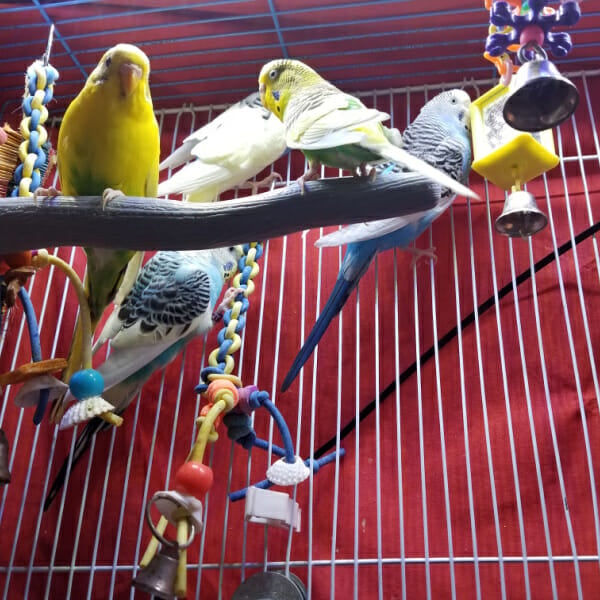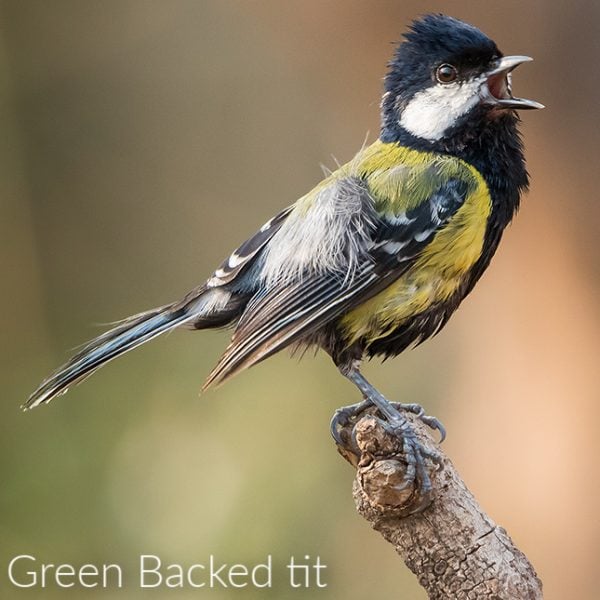Last Updated on by Mitch Rezman
Before we jump into today’s subject I would like to welcome Sunshine. Sunshine was our beloved Indian Ringneck who passed on Mother’s Day 2009 at the age of 20. Sunshine is our new “favicon” the little image in the tab on your browser and bookmarks bar. You’ll see him every time you visit WindyCityParrot.com. We’re happy that Sunshine is watching over the website for us around the clock 🙂
Last week, we talked about wing clipping. World-renowned behaviorist Greg Glendell had some feedback on our article. Greg’s comment ” Hello, I have just read your article on wing ‘trimming’.
It is sad to see such medieval practices still being advocated by those who should be in a position to inform bird carers with advice based on the birds’ needs and grounded in science, not merely on what might be “convenient’ for a bird “owner”. No matter how you attempt to dress this up, it amounts to nothing more than gross mutilation. By your own words, you show no understanding of molting sequences, wing-loading effects, and feathers.
On the flip side, Craig Harris who runs Thors Cape Parrot Site commented – “I just read your article and I have to disagree with the previous comment. I hear too many stories of lost birds because someone left a door open.
If you have a huge aviary that is one thing, but the typical house pet bird should be clipped.
I do believe that clipping ALL the flight feathers or just one wing is a very bad thing as birds can be seriously injured in a fall. On my Cape Parrot (similar to the African Grey mentioned) I trim 5-6 feathers.
Enough to limit but not eliminate flying”
We’d love to hear your opinion, feel free to leave you to comment on our Bird Care Blog
Moving right along:
Keep in mind most small birds are flock animals and tend to do better in groups. A group of smaller species birds such as Finches, Budgies, & Cockatiels do well as a small flock in aviaries . Birds also travel horizontally in flight, not vertically.
Thus a cage of greater width will allow the smallest of birds to fly back and forth more easily. Birds need to flap their wings to keep them exercised just like humans. (“Is that a clothes rack or a treadmill in the corner of your room?”)
If you have a multiple small bird Aviary, try to arrange perches, toys and accessories so there is some clear path enabling flight from one side of the cage to the other.
If you are going to fill up a large birdcage with a lot of small birds like finches or budgies and you are going to have mixed sexes, it’s important that you create areas in which some birds can take breaks and “hide” from one another so they can get away from potential aggressors.
You can use anything from a cluster of bird toys, some plastic or artificial plants (never real ones) hanging down or even some pieces of cardboard wedged into bars hiding a simple perch.
We prefer not to see multiple canaries of both sexes being caged together for long. Male canaries can get quite aggressive and surprisingly can become vicious little birds when it comes to defending their turf or trying to “encourage” a female to breed. Speaking of canaries, we recently added a food category just for canaries to Canary specific food ( and accessories) easier to find. If you have canaries, check it out here
Larger species (Conures and bigger) pose a different set of problems. Typically we recommend every bird have his or her own cage. You may have more birds than space and you may have to seek more efficient use of birdie real estate. You may then have a pair of birds you, or nature is causing/encouraging them to bond and thus breed.
In most cases, breeding pairs should share the same undivided cage so they can perform their parental duties together. Sometimes you may feel two birds would be better off together to keep each other company. This can only be determined by trial and error. Peaceful coexistence outside the cage is no guarantee harmony will prevail once the cage door is closed. There are territorial issues, Alpha male issues and the general-irrational-behavior-of-parrots, issues. Breeding cockatoo pairs need special attention and the right breeding boxes like the T box to ensure a safer environment.
We are constantly asked, “if I should get another bird to keep the one bird I have, the company”? A couple of quips come to mind, like “twos company, threes a crowd” or “birds of a feather flock together, and we don’t have any feathers”. So while the behavior of your first bird can’t be accurately predicted with the introduction of a second bird, in many cases the two birds can form a binding relationship basically cutting you out of the deal, making it hard to socialize with either one of them. We hear of that, especially with Amazons.
It’s also important to remember African Greys, Cockatoos and Macaws come from three different continents, and much like neighborhoods in urban living, these birds should have a “neighborhood” they call their own. Speaking of urban living there are a couple of ways that you can shave valuable space for birds to share.
This is where Partition Parrot Cages or Space Saver Bird Cages if you are simply seeking to save space. Partition cages allow two birds to be together in the same cage but kept mostly out of harm’s way from one another. A downside to the divider is access to each other’s body parts, thus it is possible for a toe to be bitten by the bird in the opposite side, Some cage manufacturers like Prevue offer cages that are designed to be stacked like the Prevue Clean Life for smaller birds, thus allowing complete visual separation as well.
If you have doubts as to whether one bird may be aggressive against the other, don’t rely solely on the partition. To avoid this you may want to introduce a sheet of Plexiglas attached to the partition. Plexi can usually be found at home improvement stores. Some will cut to your dimensions. I drill small holes around the edge and attach the Plexi to the divider with cable ties. If you want the divider to still slide out make sure you attach the Plexi and cable ties in a handy spot so as to not interfere with the mechanical movement.
Written and approved by the Windy City Parrot content Team
Author Profile
Latest entries
 The Traveling BirdJune 26, 2025Can You Name 5 Parrot Species That Are Living Wild in the USA?
The Traveling BirdJune 26, 2025Can You Name 5 Parrot Species That Are Living Wild in the USA? Bird BehaviorJune 26, 2025How is it Parrots Are Problem Solvers Social Animals and Even Use Tools?
Bird BehaviorJune 26, 2025How is it Parrots Are Problem Solvers Social Animals and Even Use Tools? Bird & Parrot AnatomyJune 25, 2025How a Tiny Chemical Modification Makes Parrots Nature’s Living Paintings
Bird & Parrot AnatomyJune 25, 2025How a Tiny Chemical Modification Makes Parrots Nature’s Living Paintings PigeonsJune 20, 2025How Do Parrots Thrive in Cities Outside Their Native Habitats?
PigeonsJune 20, 2025How Do Parrots Thrive in Cities Outside Their Native Habitats?




